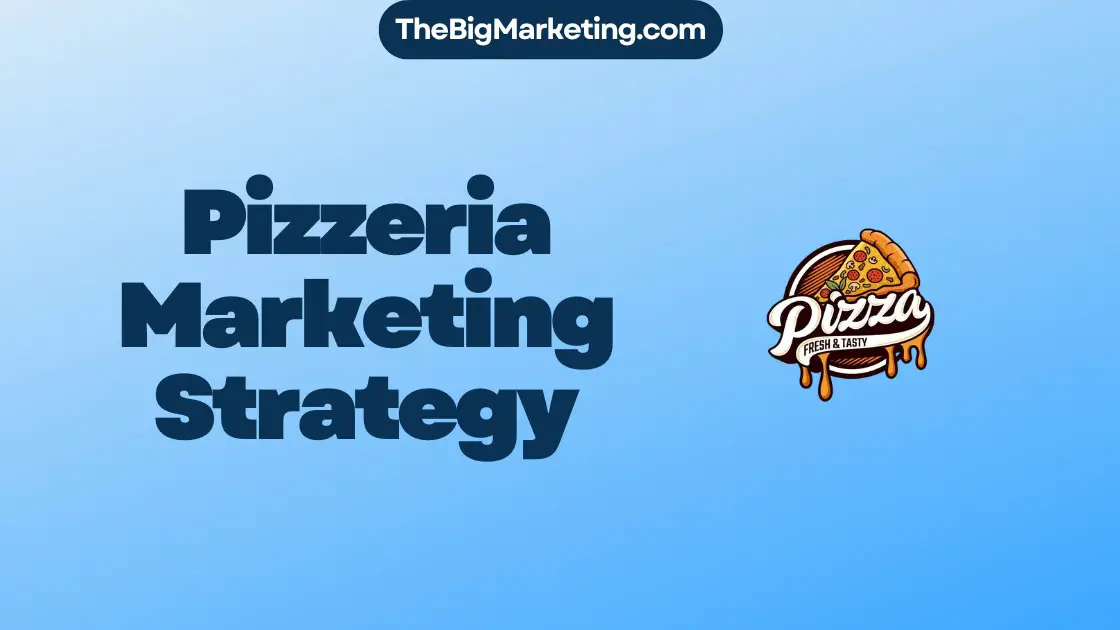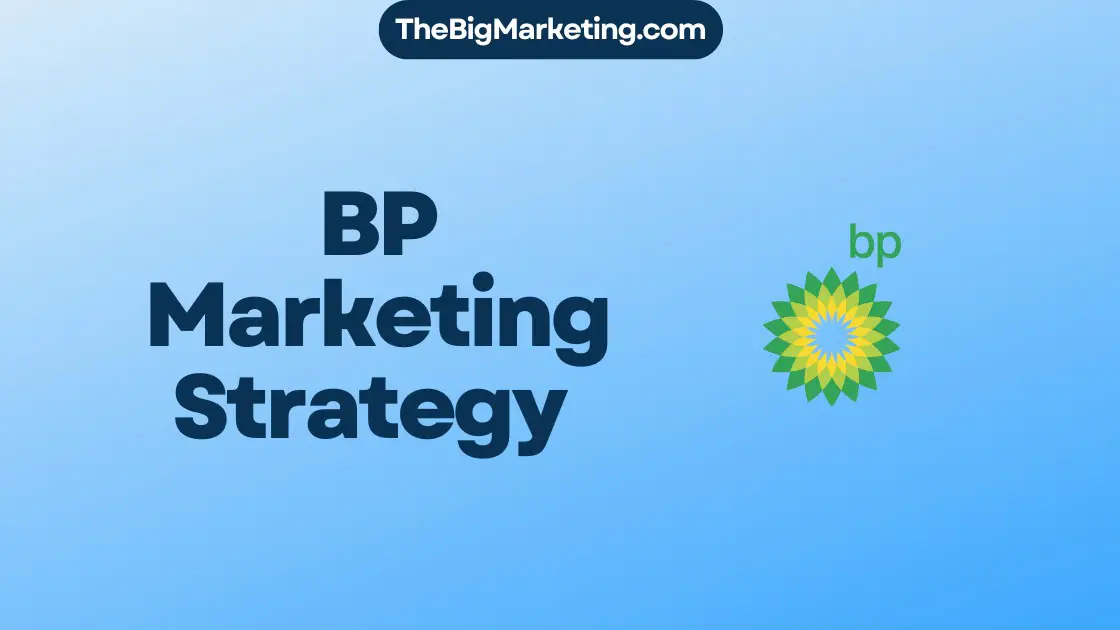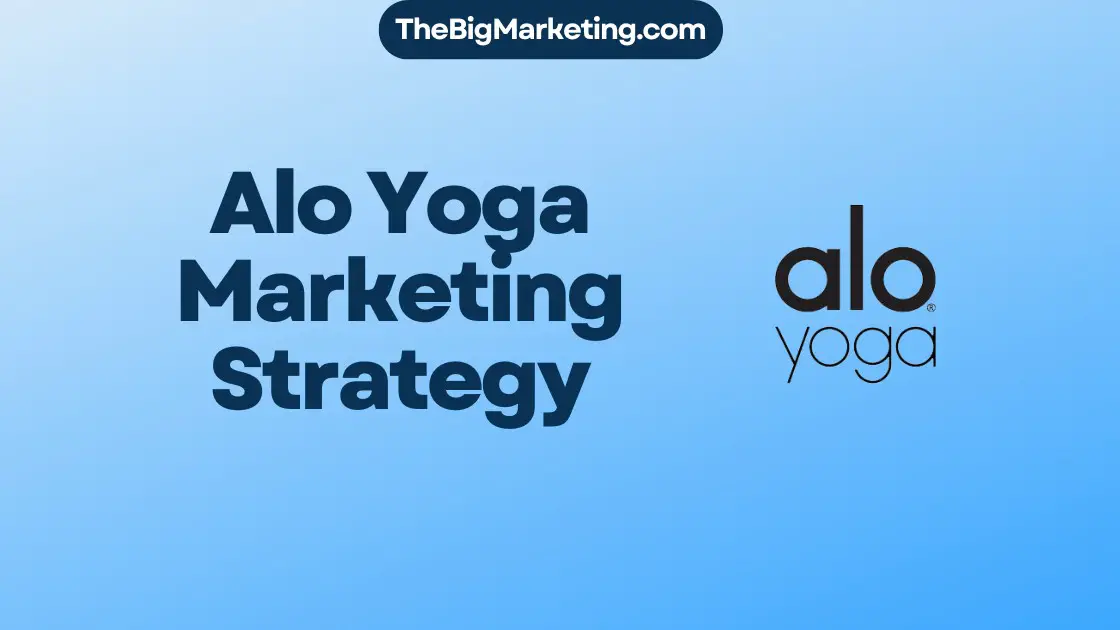In the ever-evolving world of SaaS marketing, staying ahead of the curve is crucial for success. To navigate the rapidly changing landscape and maximize your software’s growth, you need a comprehensive understanding of the cutting-edge strategies and trends that will shape the industry in 2024. In this complete guide, we will provide you with valuable insights and best practices to create a powerful SAAS marketing strategy that delivers a high return on investment (ROI).
Key Takeaways:
- Stay abreast of the latest SAAS marketing strategies and trends to remain competitive in the industry.
- Prioritize understanding your target audience and their pain points to tailor your marketing messaging effectively.
- Create a compelling brand narrative that highlights the unique value your software brings to the market.
- Utilize a multi-channel marketing approach, including content marketing, SEO, social media, PPC advertising, email marketing, and PR.
- Customize your SAAS marketing strategy for the B2B market, emphasizing ROI and providing customer success stories.
Why Does SAAS Marketing Matter?
Effective SAAS marketing plays a crucial role in the success of software-as-a-service (SAAS) solutions. In today’s competitive market, standing out and capturing the attention of potential customers is paramount. A strategic and data-driven approach is the key to showcasing the value of your software and attracting the right audience.
By employing a SAAS marketing strategy, companies can establish their brand as a leader in the industry. By understanding the unique selling points of their software and identifying the target audience’s pain points, companies can position themselves strategically to solve specific challenges. This targeted approach ensures that marketing efforts are focused and resonate with the right customers.
A data-driven approach allows SAAS companies to make informed decisions based on customer insights and behaviors. By analyzing data, companies can refine their marketing strategies, optimize campaigns, and identify opportunities to maximize ROI. This strategic use of data empowers SAAS companies to tailor their messaging, content, and marketing channels to effectively reach their target audience.
Implementing a SAAS marketing strategy is not only about attracting new customers, but also about retaining and nurturing existing ones. By building strong relationships with customers through personalized experiences and engaging content, SAAS companies can increase customer loyalty and reduce churn rates. A well-executed SAAS marketing strategy ensures that customers not only continue to use the software but also become brand advocates.
Examples of Successful SAAS Marketing Strategies
Let’s take a look at some successful SAAS companies that have implemented effective marketing strategies to stand out in the market:
- Slack: Through its strategic content marketing and storytelling approach, Slack has successfully positioned itself as the go-to collaborative communication platform for businesses.
- HubSpot: HubSpot’s inbound marketing strategy, which includes valuable content creation, SEO optimization, and thought leadership, has helped it become a leader in the marketing automation space.
- Zoom: With its intuitive user interface and strong customer support, Zoom has gained traction as a top video conferencing software, particularly during the COVID-19 pandemic.
These companies have demonstrated that a well-planned and executed SAAS marketing strategy can lead to significant growth and success. By standing out in a crowded marketplace and effectively conveying the value of their software, they have attracted and retained a loyal customer base.
| Benefits of a SAAS Marketing Strategy | Examples |
|---|---|
| Increased brand visibility and awareness | Slack, HubSpot, Zoom |
| Targeted messaging and content | Slack, HubSpot, Zoom |
| Data-driven decision making | Slack, HubSpot, Zoom |
| Customer retention and loyalty | Slack, HubSpot, Zoom |
Understanding Your Audience: The Foundation of Success
Before implementing any marketing tactics, it is crucial to thoroughly understand your target audience. By conducting market research and creating an Ideal Customer Profile (ICP), you can gain valuable insights into their demographics, industry, company size, pain points, and challenges. This understanding forms the foundation of your SAAS marketing strategy and ensures that your message resonates with the right people.
Identifying your target audience is the first step in developing an effective SAAS marketing plan. By understanding who your ideal customers are, you can tailor your messaging and marketing activities to meet their specific needs and preferences. This targeted approach allows you to connect with your audience on a deeper level and establish strong relationships.
Market research: Conduct thorough market research to gain insights into your target demographic’s preferences, behaviors, and pain points. Use surveys, interviews, and data analysis to collect valuable information that informs your marketing strategy.
Ideal Customer Profile (ICP): Create an ICP that outlines the characteristics and attributes of your ideal customer. Define their industry, job roles, pain points, and challenges. This profile will guide your marketing efforts and ensure you address the specific needs of your target audience.
Knowing your target audience helps you identify the pain points and challenges they face in their daily operations. By understanding their pain points, you can position your SAAS solution as the answer to their problems. Craft your messaging to address these pain points and demonstrate how your software can solve their challenges.
Addressing pain points: Identify the pain points your target audience experiences and explain how your SAAS solution can help alleviate them. Use case studies and customer testimonials to showcase how others have successfully overcome similar challenges with your software.
By understanding your target audience’s challenges, you can align your SAAS marketing strategy to provide solutions that meet their needs. This customer-centric approach ensures that your marketing efforts are relevant and valuable to your target audience, leading to increased engagement and conversions.
Challenges: An in-depth understanding of the challenges your target audience faces allows you to develop marketing materials that directly address these pain points. Craft content that provides solutions or guidance, positioning your SAAS solution as the perfect fit for their needs.
Creating a strong foundation of audience understanding provides the groundwork for a successful SAAS marketing strategy. By thoroughly researching your target audience, identifying their pain points and challenges, and tailoring your messaging accordingly, you can forge meaningful connections and drive conversions. Take the time to gather insights, create an ICP, and address your audience’s pain points to position your SAAS solution for success.
Building a Compelling Brand Narrative: Tell Your Story
In a crowded marketplace, a strong brand narrative can set your software apart. By crafting a compelling story that showcases the unique value of your solution, you can create a brand identity that resonates with your target audience.
When developing your brand narrative, it’s important to focus on what makes your software unique and valuable. Highlight the specific problem or pain point that your software addresses and emphasize how it provides a solution that no other competitor can offer.
Your brand narrative should be tailored to resonate with your target audience. Understand their needs, aspirations, and challenges. Position your software as the answer to their problems, demonstrating how it can make their lives easier, more efficient, or more successful.
An effective brand narrative goes beyond simply describing your software. It should be a storytelling approach that captivates your target audience and builds an emotional connection. Use narratives that inspire, engage, or entertain your audience, creating a memorable impression that sets your software apart from the competition.
How to Craft a Compelling Brand Narrative
Here are some key steps to help you create a compelling brand narrative:
- Identify your core values and mission: Define what your software stands for and the impact it aims to make on the industry or the lives of your customers.
- Understand your target audience: Conduct thorough market research to gain insights into your target audience’s needs, preferences, and pain points.
- Define your unique selling proposition (USP): Identify the key features or benefits that set your software apart from the competition.
- Create a consistent brand voice: Develop a tone and style that reflects your software’s personality and connects with your target audience.
- Develop a storytelling framework: Craft a compelling narrative structure that engages your audience and communicates the unique value of your software.
- Integrate your brand narrative across all touchpoints: Ensure consistency by incorporating your brand narrative into your website, marketing materials, social media, and customer interactions.
Remember, a compelling brand narrative is an ongoing process. Continually evaluate and refine your brand story to ensure it remains relevant and resonates with your evolving target audience. By telling your story in a way that connects with your audience on a deeper level, you can build a strong brand presence and attract loyal customers.
The Marketing Mix: A Multi-Channel Approach
A successful SAAS Marketing Strategy requires a multi-channel approach. By leveraging various channels such as content marketing, search engine optimization (SEO), social media marketing, pay-per-click (PPC) advertising, email marketing, affiliate marketing, and public relations (PR), you can effectively reach your target audience across multiple touchpoints.
Content marketing plays a crucial role in establishing brand authority and educating your audience about the value of your SAAS solution. Through well-crafted blog posts, whitepapers, and case studies, you can provide valuable insights and build trust with potential customers.
SEO is another vital component of a multi-channel approach, as it helps your website rank higher in search engine results, driving organic traffic. By optimizing your website content and conducting keyword research, you can attract highly relevant visitors who are actively looking for solutions in your industry.
Social media marketing allows you to engage with your audience on platforms like Facebook, Twitter, LinkedIn, and Instagram. Through compelling content, targeted ads, and community engagement, you can raise brand awareness, nurture relationships, and generate leads.
PPC advertising, such as Google AdWords, enables you to display targeted ads to individuals actively searching for SAAS solutions. By carefully selecting keywords and optimizing your ad campaigns, you can drive highly qualified traffic to your website and increase conversions.
Email marketing remains a powerful tool in your marketing mix, as it allows you to directly reach your audience’s inbox. By segmenting your email list and personalizing your messages, you can deliver relevant content, nurture leads, and drive conversions.
Affiliate marketing offers a unique opportunity to tap into existing networks of affiliates who can promote your SAAS solution to their audiences. By establishing partnerships and offering attractive commissions, you can expand your reach and leverage the credibility and trust built by the affiliates.
PR plays a critical role in building brand authority and maintaining a positive brand image. By securing media coverage, featuring your company in industry publications, and leveraging influencers, you can enhance your SAAS solution’s visibility and reputation.
By implementing a multi-channel approach and tailoring each channel to maximize its effectiveness, you can ensure that your SAAS marketing strategy reaches the right audience, at the right time, with the right message. A well-rounded marketing mix increases your chances of success and positions your SAAS solution as a leader in the market.
B2B SAAS Marketing: Tailoring Your Approach
When it comes to SAAS marketing in a B2B context, a tailored approach is key. B2B buyers are known for their analytical mindset and focus on return on investment (ROI). To effectively market your SAAS solution to these buyers, you need to highlight the tangible benefits it brings to their organizations, such as increased efficiency and cost savings.
One effective strategy is to showcase real-world customer success stories and case studies that demonstrate the value proposition of your SAAS solution for businesses like theirs. By sharing these stories, you can provide social proof and build trust with potential buyers, showing them how your software has helped organizations similar to theirs achieve their goals.
Another important aspect of B2B SAAS marketing is emphasizing the analytical capabilities of your software. B2B buyers often rely on data and quantitative analysis to make their purchasing decisions. This means that highlighting the analytical features and capabilities of your SAAS solution can be highly persuasive and differentiate your offering from competitors.
In addition to emphasizing ROI and analytical capabilities, it’s also crucial to tailor your messaging and marketing materials to the specific needs and pain points of your target B2B audience. Understanding their challenges and aligning your SAAS solution as the ideal solution to overcome those challenges can significantly impact your marketing effectiveness.
Remember, B2B SAAS marketing requires a nuanced approach. By focusing on ROI, leveraging customer success stories and case studies, highlighting analytical capabilities, and addressing the specific needs of your target audience, you can create a compelling and effective marketing strategy that resonates with B2B buyers.
| Benefits of Tailoring B2B SAAS Marketing Approach: |
|---|
| 1. Increased efficiency and cost savings |
| 2. Social proof and trust-building with real-world customer success stories |
| 3. Highlighting analytical capabilities to appeal to B2B buyers |
| 4. Addressing specific pain points and needs of the target audience |
By adopting a tailored approach in your B2B SAAS marketing strategy, you can effectively position your software as a valuable solution that meets the specific needs of B2B buyers. Understanding their analytical mindset, showcasing real-world success stories, and addressing their pain points are essential elements of a successful B2B SAAS marketing campaign.
SAAS Marketing Best Practices: Optimizing for Success
Implementing best practices is essential for optimizing your SAAS marketing strategy. By utilizing data-driven marketing, personalized messaging, landing page optimization, A/B testing, and building strong relationships with your customers, you can ensure that your marketing efforts are effective and yield the desired results.
Data-Driven Marketing
Data plays a crucial role in understanding your audience and making informed marketing decisions. Collecting and analyzing data helps you gain insights into customer behavior, preferences, and demographics. With this information, you can tailor your marketing strategies to meet the specific needs and interests of your target audience, resulting in higher engagement and conversions.
Personalized Marketing
Personalization is key to capturing the attention of your audience in a crowded SAAS market. By segmenting your audience based on their individual needs and interests, you can deliver targeted messages and relevant content that resonates with them. Personalized marketing creates a more personalized and engaging experience, increasing the likelihood of conversion and customer loyalty.
Landing Page Optimization
Your landing pages are crucial for capturing leads and driving conversions. Optimizing your landing pages involves making them visually appealing, easy to navigate, and compelling. A well-optimized landing page should have clear calls to action, concise and persuasive copy, and forms that are easy to fill out. Regularly analyze and test different elements of your landing pages to maximize their effectiveness.
A/B Testing
A/B testing is a powerful tool for optimizing your marketing materials. By creating variations of your emails, landing pages, or ads and testing them against each other, you can identify which version performs better and refine your marketing campaigns accordingly. A/B testing allows you to make data-driven decisions and continuously improve your messaging and design to maximize conversions.
Building Relationships
Fostering genuine relationships with your customers is vital for long-term success. Building a sense of community around your brand helps to create loyal and engaged customers who are more likely to refer your SAAS solution to others. Engage with your customers through social media, email marketing, and other channels. Provide personalized support and create opportunities for feedback and dialogue.
By following these best practices, you can optimize your SAAS marketing strategy and increase your chances of success in the competitive SAAS market. Remember to continuously analyze your data, adjust your messaging to individual user needs, optimize your landing pages, conduct A/B testing, and forge meaningful relationships with your customers. These practices will help you stay ahead of the curve and drive substantial growth for your SAAS business.
SAAS Marketing Strategy Example: Putting It All Together
To illustrate the concepts discussed, let’s use a hypothetical example of marketing a project management SAAS solution for marketing agencies. By following a comprehensive SAAS marketing strategy, you can effectively target your audience and craft a compelling brand narrative that resonates with them.
Identifying the Target Audience
The first step in our SAAS marketing strategy is to identify the target audience. In this case, we are targeting marketing agencies. Understanding their pain points, challenges, and specific needs will allow us to tailor our marketing efforts accordingly.
Crafting a Compelling Brand Narrative
The next step is to create a compelling brand narrative that showcases the unique value of our project management SAAS solution. We’ll highlight how our software streamlines workflows, improves collaboration, and increases productivity for marketing agencies.
Implementing a Multi-Channel Marketing Mix
To reach our target audience effectively, we’ll implement a multi-channel marketing mix. This includes:
- Content Marketing: Creating informative and educational blog posts, whitepapers, and case studies that demonstrate the benefits of our project management SAAS solution.
- SEO: Optimizing our website and content to rank higher in search engine results, making it easier for marketing agencies to find us.
- Social Media Marketing: Engaging with marketing agencies on social media platforms and sharing valuable content to build brand awareness and attract their attention.
- PPC Advertising: Running targeted pay-per-click ad campaigns to drive traffic to our website and generate leads from marketing agencies actively seeking project management solutions.
- Email Marketing: Nurturing leads through personalized email campaigns that highlight the benefits of our SAAS software and offer relevant content and resources.
- Affiliate Marketing: Collaborating with industry influencers and marketing agencies to promote our project management SAAS solution and reach a wider audience.
By leveraging these channels, we can engage with marketing agencies at different touchpoints and ensure our message reaches them effectively.
Tailoring the Approach for Marketing Agencies
With our target audience in mind, we will tailor our marketing approach to meet the specific needs of marketing agencies. This may include providing industry-specific case studies, targeting marketing events and conferences, and highlighting success stories of other marketing agencies who have benefited from our SAAS solution.
By combining these strategies and putting them into action, we can effectively market our project management SAAS solution to marketing agencies, generate leads, and drive business growth.
| Marketing Channel | Description |
|---|---|
| Content Marketing | Creating informative and educational content to showcase the benefits of our project management SAAS |
| SEO | Optimizing our website and content to rank higher in search engine results for relevant keywords |
| Social Media Marketing | Engaging with marketing agencies on social media platforms to build brand awareness and foster relationships |
| PPC Advertising | Running targeted pay-per-click ad campaigns to drive traffic and generate leads |
| Email Marketing | Sending personalized email campaigns to nurture leads and provide valuable resources |
| Affiliate Marketing | Collaborating with industry influencers and marketing agencies to promote our SAAS solution |
The Future of SAAS Marketing: Embracing Innovation
The SAAS market is constantly evolving, and staying ahead of new trends and technologies is essential for the success of your SAAS marketing strategy. Here are some key areas to focus on:
Account-Based Marketing
Account-based marketing (ABM) is a powerful strategy that involves targeting specific high-value accounts and tailoring marketing efforts to their unique needs and challenges. By personalizing your messaging and content for each account, you can increase engagement and conversions.
Personalization through AI and Machine Learning
Personalization is becoming increasingly important in SAAS marketing. By leveraging AI and machine learning algorithms, you can analyze data and create customized experiences for your target audience. From personalized email campaigns to dynamic website content, personalization enhances customer engagement and drives results.
Priority on Customer Experience
Delivering exceptional customer experiences is a key differentiator in the competitive SAAS landscape. By prioritizing customer satisfaction and continuously improving their experience with personalized interactions, proactive support, and seamless onboarding, you can build long-term customer loyalty and drive revenue growth.
Marketing Automation
Marketing automation tools streamline and automate repetitive marketing tasks, allowing you to optimize your workflows and improve efficiency. From email automation to lead nurturing, marketing automation empowers you to deliver targeted messages at the right time, increasing engagement and conversions.
By embracing these innovative strategies and technologies, you can position your SAAS marketing efforts for success in the evolving marketplace.
| Trends | Description |
|---|---|
| Account-Based Marketing | Targeting high-value accounts and personalizing marketing efforts |
| Personalization through AI and Machine Learning | Utilizing AI and machine learning to deliver personalized experiences |
| Priority on Customer Experience | Delivering exceptional customer experiences to drive loyalty and growth |
| Marketing Automation | Automating marketing tasks for improved efficiency and effectiveness |
Optimizing ROI Measurement for SAAS Marketing
Measuring ROI in SAAS marketing can be challenging. It requires a holistic approach that considers various factors such as marketing cost, revenue, time lag, mental availability, and brand awareness. When evaluating the success of your SAAS marketing strategy, it’s essential to go beyond immediate revenue figures and take into account the broader impact of your marketing efforts.
Considering Marketing Costs
When measuring ROI, it’s crucial to consider all marketing costs. This includes not only direct expenses, but also staff time, marketing tools, and opportunity cost. By accounting for these expenses, you can obtain a more accurate picture of the investment required to generate revenue.
Understanding Revenue Time Lag
It’s important to recognize that revenue may not immediately reflect your marketing efforts, especially for SAAS products with long sales cycles. The impact of your marketing campaigns may take time to materialize as potential customers move through the sales funnel and make purchasing decisions. Therefore, it’s essential to have a long-term perspective when measuring ROI.
Assessing Mental Availability and Brand Awareness
Measuring the impact of marketing on mental availability and brand awareness can be challenging since these factors are not directly quantifiable. However, they play a significant role in influencing customers’ perception of your brand and their likelihood to convert. Investing in strategies that enhance brand awareness and create a positive mental association with your SAAS solution can have a substantial impact on your overall success.
| Factors to Consider for ROI Measurement | Key Takeaways |
|---|---|
| Marketing Costs | Consider all expenses, staff time, marketing tools, and opportunity cost. |
| Revenue Time Lag | Recognize that revenue may not immediately reflect marketing efforts, especially for SAAS products with long sales cycles. |
| Mental Availability and Brand Awareness | Understand the impact of marketing on customers’ perception and likelihood to convert. |
By finding a balance between measuring immediate revenue and considering the broader impact of marketing efforts, you can optimize your ROI measurement for SAAS marketing. Remember that ROI is not solely determined by immediate returns but also by factors that contribute to long-term business success.
Creating an Effective Marketing Reporting Plan
In order to track the success of your SAAS marketing campaigns, it is essential to develop an effective marketing reporting plan. By using the “3R’s” framework, you can measure the reach, resonance, and reaction of your marketing efforts. This will provide valuable insights into how well your content is connecting with your audience and the actions they are taking as a result.
Firstly, measuring the reach of your marketing campaigns allows you to understand the size of your audience and the extent of your brand’s visibility. This can be done through metrics such as website traffic, social media impressions, and email open rates. By tracking these numbers over time, you can identify trends and make informed decisions on how to expand your reach.
Next, evaluating the resonance of your content is crucial to determine how well it is resonating with your target audience. This can be measured through metrics such as engagement rates, time spent on page, and social media interactions. By analyzing these metrics, you can gain insights into the effectiveness of your messaging and refine your content strategy accordingly.
Lastly, tracking the reaction of your audience to your marketing efforts is essential to understand the impact they are having. This can be measured through metrics such as lead conversions, customer acquisitions, and revenue generated. By monitoring these metrics, you can gauge the ROI of your marketing campaigns and identify areas for improvement.
It is important to customize your reporting plan based on your organization’s structure, goals, and metrics. Determine the key performance indicators (KPIs) that are most relevant to your SAAS marketing strategy and establish a reporting cadence that suits your needs. Whether it’s weekly, monthly, or quarterly reports, regular monitoring and analysis of data will provide valuable insights for optimizing future campaigns.
By developing an effective marketing reporting plan, you can gain a deeper understanding of the impact of your SAAS marketing strategy and make data-driven decisions to enhance your ROI. Keep in mind that measuring the success of your marketing efforts is an ongoing process, and continuous evaluation and refinement will ensure long-term growth and success in the competitive SAAS market.
| Metric | Description |
|---|---|
| Reach | Measure the size of your audience and the visibility of your brand through metrics such as website traffic, social media impressions, and email open rates. |
| Resonance | Evaluate how well your content is connecting with your target audience through metrics such as engagement rates, time spent on page, and social media interactions. |
| Reaction | Track the actions taken by your audience as a result of your marketing efforts, such as lead conversions, customer acquisitions, and revenue generated. |
Conclusion
In conclusion, a successful SAAS marketing strategy requires a comprehensive approach that accounts for various factors, including audience understanding, a compelling brand narrative, a multi-channel marketing mix, best practices, and staying abreast of industry trends. By incorporating these elements into your strategy, you can position your software for future growth and ensure long-term success in the competitive SAAS market.
To begin, understanding your target audience is essential. Thoroughly research their demographics, pain points, and challenges to tailor your messaging effectively. Craft a compelling brand narrative that highlights the unique value your software brings, resonating with your target audience and setting your solution apart from the competition.
Next, leverage a multi-channel marketing mix to reach your audience across various touchpoints. Implement content marketing, SEO, social media marketing, PPC advertising, email marketing, affiliate marketing, and PR to maximize your reach and impact. This strategic approach will enhance your visibility and generate more leads for your SAAS business.
Lastly, staying informed about industry trends and adopting innovative practices will ensure your SAAS marketing strategy remains effective in the future. Embrace account-based marketing, personalization through AI and machine learning, prioritize customer experience, and leverage marketing automation tools. By embracing innovation, you can adapt to the evolving SAAS market and stay ahead of the competition.





